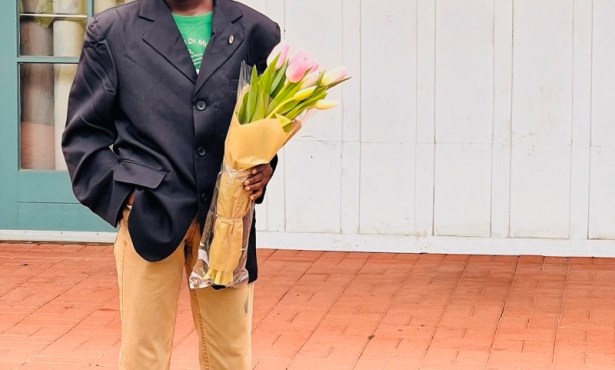Review: Charlie Albright at Hahn Hall
UCSB Arts & Lectures Presented the Pianist on October 15th
UCSB Arts & Lecture’s 2014-15 Up Close & Musical series leapt into activity last Wednesday with a solo recital by the young and brilliant American pianist Charlie Albright. The hip series, now in its second year, hosts vital, young-ish classical artists who in one way or another are toeing the margins of tradition, adventuring, and perhaps inventing the next generation’s regard for the classics. Albright’s key credential, aside from his fine playing of repertory standards, is his talent for improvisation in a classical idiom.
Albright is precisely what his name suggests: chipper, enthusiastic, winning, and boyish. He chose to keep the recital atmosphere casual by chatting affably and informatively between pieces. At the same time, his other voice, the Steinway, soared with elevated beauty and plunged psychic complexities. And so stood a slightly distracting tension, for this reviewer at least. Albright, at 24 years old, has yet to find the right balance between familiarity and formality in the concert hall. Capping most pieces with a glib, “That was fun,” is not the most sensitive way to respect the emotional afterglow of “serious music.” Of course, no one wants to begrudge a promising pianist joy in his remarkable facility. But the affected music listener wants to know of the performer, “Was it as good for you as it was for me?”
The recital opened with two impromptus from Op. 90, Nos. 3 and 2 by Franz Schubert. No.3 places a song of longing over shimmering watery arpeggios. No.2 alternates between a rollercoaster scale chase that sounds like the soundtrack to a Rube Goldberg machine and a thunderous march-like theme that grounds the other in emphatic gravity. Next came the surviving two movements from Leoš’s Piano Sonata in Eb minor, 1. X. 1905 “From the Street,” a work written to honor a Czech worker killed during a demonstration in 1905. Long themes of The Presentiment flow until they’re crowded into a dissonant wreck; Death begins with a five-note theme, then translates and develops it into a crescendo of grief. The Schubert and Janáček produced a fine, strong opening for the pianist.
Albright next invited audience input for the program’s improvised piece. Random notes were suggested (Eb, Gb, Db, C) from which a melodic theme was developed, that was imbedded in a rich, swirling harmonic underlay, which transformed into a dance stepping interlude, and on to further wonders. The demonstration was startlingly beautiful; the resulting composition was cogent and well-formed. Albright’s early learning on piano was entirely by ear, and freedom from the page has been the payoff ever since. I was reminded of Venezuelan pianist Gabriela Montero, who improvised an entire recital in the same hall a few years ago. Both artists seem to possess a native ability to “speak” through the instrument, which seems to greatly enhance the act of reciting the written “words” of others.
The most substantial undertaking was yet to come. After intermission came twelve études, Op. 25, by Frédéric Chopin. After relating the nickname and thumbnail description for each étude, Albright launched into a fully-committed performance, moving powerfully through the kaleidoscope zodiac of moods and forms. The concert also featured two transcription-elaborations: Adolf Schulz-Evler’s take on the themes from Blue Danube by Johann Strauss II; and a sparkling encore of Arcadi Volodos’s “paraphrase” of Mozart’s Turkish March.



